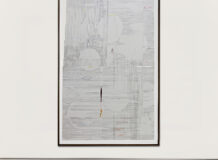Throughout history, portraits have played a primary role in the way different cultures have represented the ways of seeing themselves. Except in some particular cases, such as the funeral portraits of ordinary people from the Fayum district in Egypt, almost all of the portraits that have survived to this day belong to people of great social relevance. If we think about painting, sculpture, mosaics and ceramics from both the classical and medieval worlds, we will see this statement reinforced. Kings, emperors and families with great political power have ultimately been the only holders of that privilege. This tradition of linking the portrait to people of political power from the different cultures of history continues to a large extent to this day and is expressed in the photographic portraits of the presidents of modern states, which are often used as government protocol. In this sense, it is common to find the image of the president in classrooms and in most public buildings, always used as a symbol of state power. We could even say that it is in the few moments in history where power carefully represents itself.
Alejandro Almaraz’s work seeks to generate a space for reflection about the relationship between portraiture and political power using a technique of superimposing images in which he shows us visual averages of the style characteristics of these portraits. Alejandro makes visible the different forms, according to how different political periods in different countries have represented themselves. Thus, each of the portraits in this series are composed of a large number of official portraits of presidents arranged in almost transparent layers and only the sum of the different layers gives the final shape of the face that we see in their images, making evident the different positions, outfits and facial expressions chosen to represent themselves.
